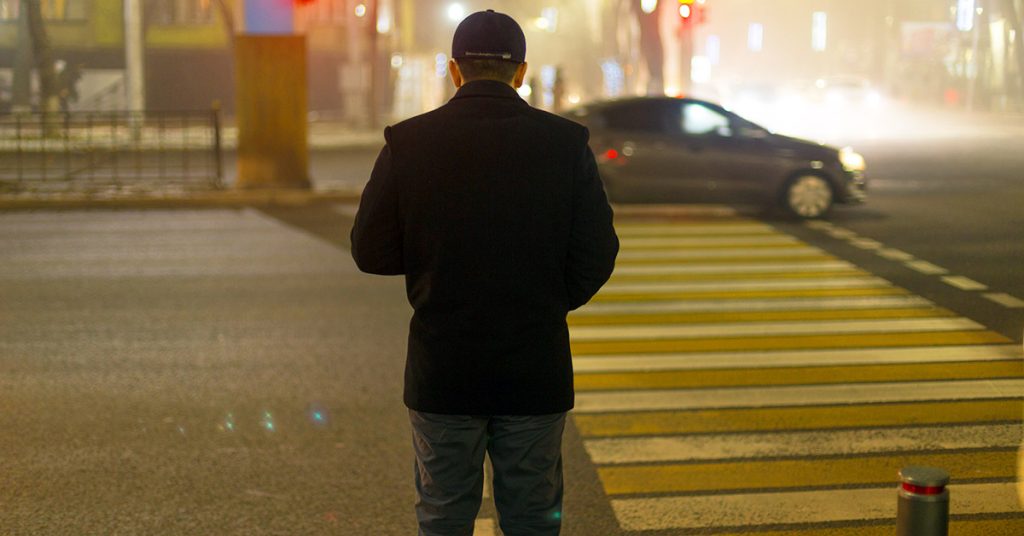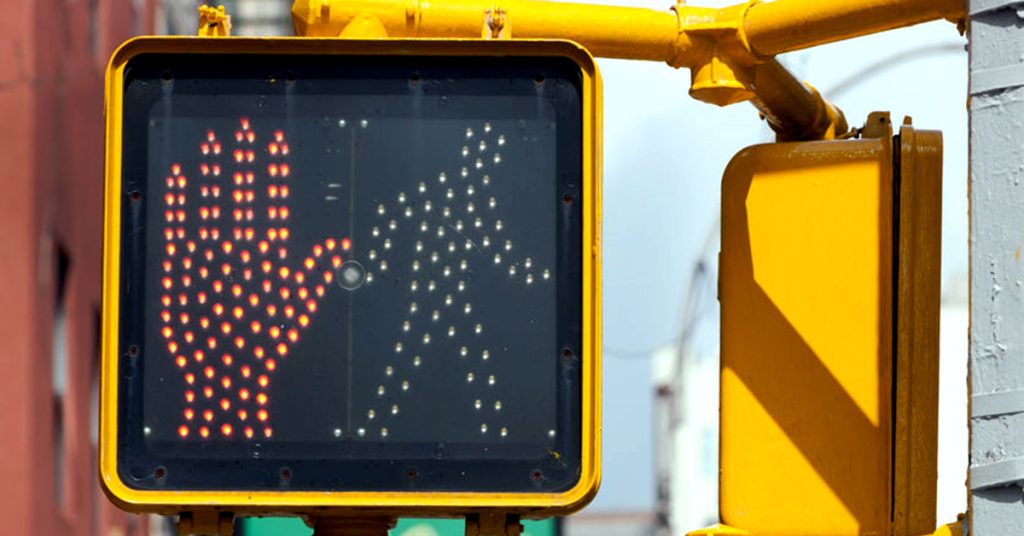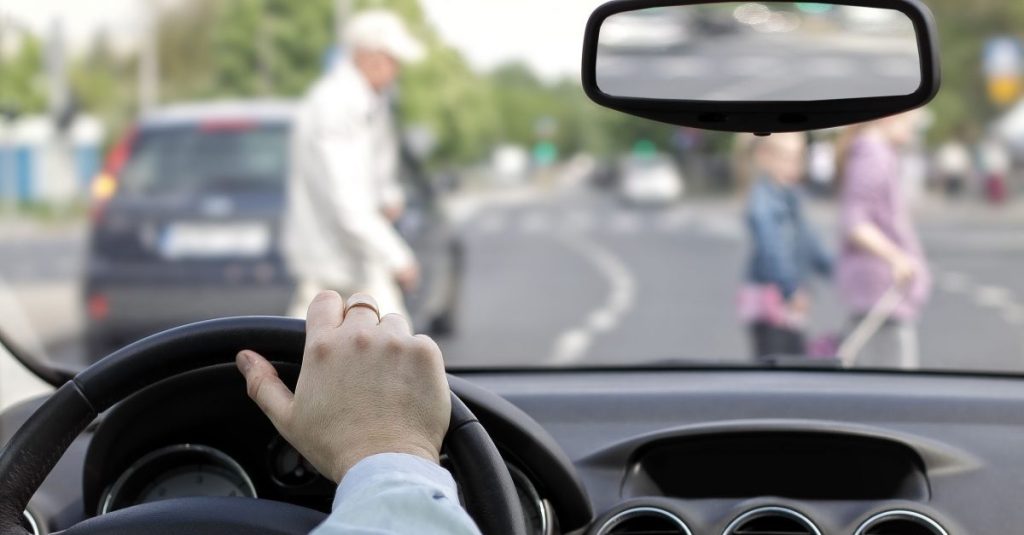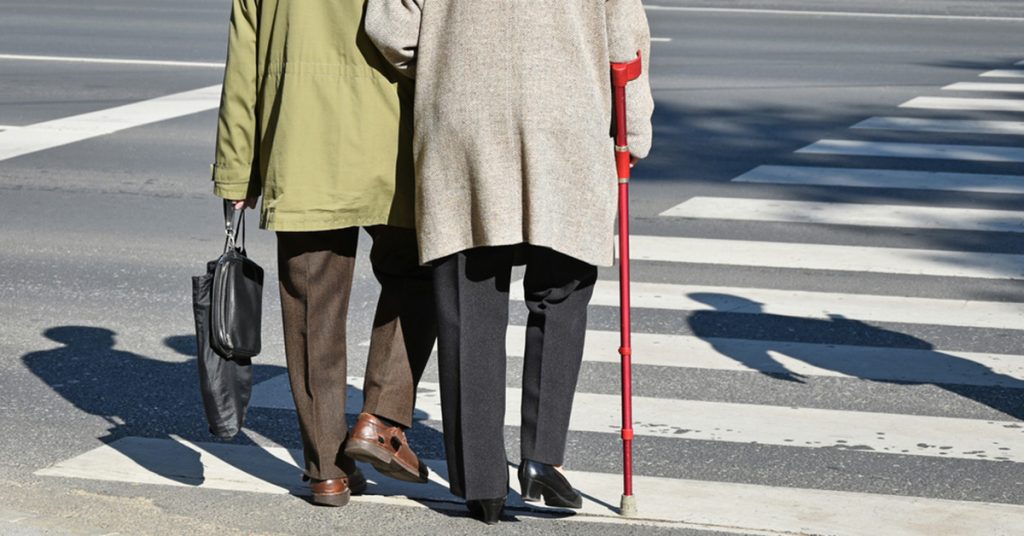Posts Tagged ‘Massachusetts pedestrian accidents’
As the Days Get Shorter, Make Pedestrian Safety a Priority in Massachusetts
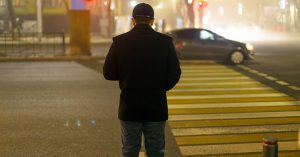
As the days get shorter, drivers must watch for pedestrians. The number of pedestrian fatalities has risen in Massachusetts during 2021.
The majority of all pedestrian fatalities occur at night or in dark light conditions, according to the National Highway Traffic Safety Administration (NHTSA). This is a significant point come October in Massachusetts, when the days get shorter and the walk home becomes darker.
As a driver, renew your commitment to travel safely near pedestrians this Fall. This is critical. In addition to shorter days, Massachusetts is seeing a rise in pedestrian fatalities as traffic volumes start to rebound. In August, the Massachusetts Department of Transportation (MassDOT) reported traffic volumes had returned to just 5 percent below pre-pandemic levels in 2019.
As of October 21, 2021, 58 pedestrians have died on Massachusetts roads this year, according to MassDOT crash data. 55 pedestrian fatalities were recorded in 2020, when traffic was lightest due to Covid 19 stay at home policies. Prior to the pandemic, there were 78 fatal pedestrian injuries statewide in 2019.
There have been 1,086 total pedestrian accidents reported in 2021 so far, including those involving fatal injuries, non-fatal injuries and property damage without injury, compared to 1,443 pedestrian crashes in 2020 and 2,198 pre-pandemic in 2019. (Source: MassDOT, 2017-2021 Pedestrian, Cyclist and Motorcyclist Crashes by Injury).
While helpful, the data is just a snapshot. A better resource: ask anyone who walks if driving patterns are still irregular due to the pandemic. Roads may be less congested, but drivers are picking up speeds at times. This endangers pedestrians, especially at night, when there is less visibility.
Reminders for Driving Safely Near Pedestrians and Reducing the Risk of Injury
Drive Slowly and Watch for Pedestrians
Drive slowly and always look for pedestrians. Take an extra moment to look in all directions before you step on the gas. Pedestrians are more likely to blend in at night, even in well-lit areas.
Yield and Stop at Crosswalks
Drivers have a responsibility to yield to pedestrians before turning at traffic signals and to stop or yield for pedestrians to safely walk through crosswalks. Many pedestrian accidents at night occur in intersections and crosswalks.
Once you start moving, you can attempt to break quickly but you really have less control, especially in short distance situations, such as when turning at an intersection or backing out of a parking space. Take a moment and take a good look for pedestrians first.
Give Yourself More Time When Getting in Your Car
Drivers can reduce their risk of hitting a pedestrian by giving their full attention to the road. To do this, give yourself time to get ready for the ride while you are parked: buckle your child up and set up your cell phone in hands-free mode if you plan to use it. Make sure you have directions typed into your GPS or you know where you are going.
When you are finished, then give yourself time to turn on the vehicle and look for pedestrians.
Drive at Night Without Distractions
The state of Massachusetts now allows drivers to use cell phones in hands-free mode, but this can be a dangerous distraction when driving at night. The best policy is to pull over in a legal parking space if you need to call someone and avoid causing a car accident or truck crash, resulting in pedestrian injuries.
Reduce Your Speed
During the day and at night, you give yourself more time to stop for pedestrians when you travel at the speed limit or below if necessary for safety conditions.
Look for Both Pedestrians and Cyclists
Pedestrians may or may not wear bright clothing, so you have to really check when you drive at night or in the early morning. Pedestrians may be hard to see, even when traveling through a well-lit intersection or parking lot.
Cyclists may be easier to see as they approach. In Massachusetts, cyclists must use a white headlight and red taillight or rear reflector at night, or specifically from ½ hour after sunset until ½ hour before sunrise under M.G.L. c. 85, § 11B.
This means you may see a white light when a cyclist is approaching and red light (or reflector) from behind. You may also see reflective material on a cyclist’s pedals.
Consider the Impact of Darkness on Drivers
It is simply harder to see at night. Not just for senior citizens. Age-related vision changes can pay a toll much earlier than retirement age. For instance, a 50-year-old driver may need twice as much light to see as well as a 30-year-old, according to the National Safety Council. It is critical for all drivers to schedule an annual eye exam, get proper rest and set aside distractions.
Older Drivers
Still, older drivers may struggle the most when driving at night. At 60 or older, drivers may not see as well at night and may suffer from a loss in color and depth perception, making it harder to judge speeds and distances, according to the American Optometric Association.
Safety precautions for older drivers traveling at night:
- Have an annual eye examination.
- Consider taking a driving class to brush up on your driving skills and learn about age-related vision changes. The AARP offers courses and other organizations may also.
- Limit or avoid driving at night.
- Reduce your speed and expect pedestrians.
- Be cautious at intersections, taking extra care to yield to pedestrians.
Limit Teen Driving at Night
As a parent, let your teen drive during the day, but consider limiting their driving hours at night this Fall. Teens are still learning and driving safely at night takes practice. And right now, traffic is even less predictable and your teens may be driving alongside more trucks and delivery vans as we approach the holidays.
This is a suggestion. But remember under the Massachusetts Junior Operator Law, teens are not permitted to drive at all between 12 a.m. and 5 a.m.
Free Legal Consultation – Boston Pedestrian Accident Attorneys
Breakstone, White & Gluck is a top-rated Boston personal injury law firm. With more than 100 years combined experience, our attorneys provide thorough and aggressive representation to those injured by negligence across Massachusetts, including in Boston, Cambridge, Winthrop, Arlington, Somerville, Everett and Chelsea. We also serve clients across the state, including in Quincy and the South Shore, Hyannis, Barnstable and Cape Cod, Framingham, Worcester and the Danvers and the North Shore.
Our firm specializes in representing pedestrians and cyclists who have been injured in auto accidents, truck accidents and bus crashes, including MBTA bus accidents in the city of Boston.
For a free legal consultation, contact our firm at 800-379-1244 or 617-723-7676 or use our contact form.
Report: Fatal Pedestrian Accidents Rose Over Decade in Massachusetts
The New Year has begun with several reports of pedestrian accidents across Massachusetts. One pedestrian was seriously injured in Springfield. Two pedestrians were killed, one in Charlestown and one in Oxford.
On January 5th, Boston Police responded to a fatal scene at Charlestown’s City Square. A 92-year-old pedestrian died after being struck by a vehicle near the Charlestown Navy Yard and dragged for nearly a mile, according to news reports. Police later announced they had located a vehicle of interest.
A new report highlights the dangerous climb in pedestrian crashes in the U.S. Between 2009 and 2018, the number of pedestrians killed in U.S. car crashes rose by 55 percent, according to the AAA Foundation for Traffic Safety. This is a major increase, following three decades of decreases.
In Massachusetts, 725 pedestrians were killed during this period. Another 17,000 pedestrians were injured. Boston, Springfield, Worcester, New Bedford and Brockton reported the highest numbers of pedestrian injuries and fatalities in Massachusetts.
Other notes:
- Most pedestrian injuries occurred between 3 p.m. and 7 p.m.
- 28 percent of the pedestrian accident victims in Massachusetts were 65 or older
- 3 out of 4 pedestrians killed on U.S. roads in 2018 were hit during darkness
- 84 percent of pedestrian accidents over the 10 years occurred on streets with speed limits 30 mph or higher
- There was a 70 percent increase in pedestrians killed at non-intersection locations without crosswalks
AAA is calling on cities and states to improve traffic infrastructure to provide more protection to pedestrians.
This report is a good reminder for drivers to really watch for pedestrians. This is January and darkness comes early. We are also wrestling with the COVID-19 pandemic. Many Massachusetts residents are out of routine and may be walking in new areas and at different times. As a driver, you have the ability to slow down and that can make all the difference in preventing a pedestrian accident. According to StreetsBlog, a pedestrian struck by a driver traveling at 20 mph has a 93 percent chance of surviving.
Here are a few safety reminders for drivers:
- Obey traffic signs.
- Slow down. Travel below the speed limit.
- Stop for pedestrians at crosswalks.
- At traffic signals and stop signs, look front, back, right and left before you step on the gas. You have to watch for pedestrians as well as cyclists.
- Do not use your cell phone while driving.
Free Legal Consultation – Breakstone, White & Gluck
At Breakstone, White & Gluck, our Boston personal injury lawyers are known for our experience representing pedestrians who have been injured in motor vehicle accidents, truck collisions and bus accidents. We represent those injured by the negligence of others across Massachusetts, including in Boston, Cambridge, Somerville, Everett, Quincy and other areas. If you or a loved one has been injured, learn your legal rights.
For a free legal consultation, contact Breakstone, White & Gluck at 800-379-1244 or 617-723-7676 or use our contact form.
Beware: The Most Dangerous Pedestrian Street Crossings in Massachusetts
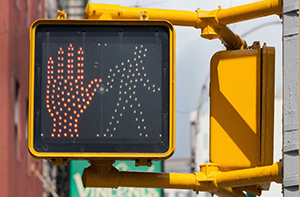
Pedestrians walk safer in Massachusetts communities which utilize pedestrian traffic signals to reduce the risk of crashes.
Pedestrian safety is always an important topic. But in Massachusetts, the topic is most critical during the winter months, when a large number of pedestrian accidents happen.
First, everyone on the road – drivers, pedestrians and cyclists – must use reasonable care and follow traffic laws. Then, take another careful look at intersections and school zones you travel through. Read traffic signs and find the crosswalk markings. They may not be as visible during snow conditions, at night or when a large truck is in the next lane. Make sure to stop well before the crosswalk.
Under Massachusetts law, pedestrians have the right of way when they are in a crosswalk and the “Walk” signal is operational. When there is no signal, drivers shall yield the right of way to pedestrians.
Finally, learn where pedestrian accidents and crosswalk accidents have happened in Massachusetts. Read the list below and take away any insights you can to protect yourself, older parents and young children.
Lynn
From 2007 to 2016, the Massachusetts Department of Transportation (MassDOT) reported the highest numbers of pedestrian crashes were in Lynn. The downtown area – the roads along Washington Street, Central Avenue and Union Street – saw a total of 321 pedestrian crashes, including 223 incidents which resulted in injury or death. There were another 98 crashes without injuries.
Chelsea
The area approaching the Tobin Bridge saw 260 pedestrian crashes over the same decade. The crash cluster included Chestnut Street, Cherry Street, Ash Street and Everett Avenue. These reports included 192 pedestrian crashes resulting in injury or death and 68 other incidents with no injury reports.
Fall River
MassDOT reported North Main Street and surrounding streets had the third highest number of pedestrian accidents. There were 143 pedestrian injuries and deaths. This cluster included North Main Street then stretched over Interstate 195 to Columbia Street, Hope Street, down to Peckham and Palmer streets.
Cambridge
Central Square is one of the busiest pedestrian walking areas in all of Massachusetts. Central Square and nearby streets ranked fourth for pedestrian accidents in Massachusetts. With 143 total crashes, this cluster includes Lansdowne Street and Hancock Street. This area is near the Central Square T stop, bus services and Cambridge city services.
Boston
With 134 pedestrian crashes, a stretch of downtown Boston ranked fifth for the most pedestrian accidents. This area included Boylston Street to the Mass Turnpike, Route 93 and Frontage Road. There were 84 crashes resulting in injury or death.
New Bedford
This Bristol County community saw 82 pedestrian crashes between Route 6 and Hawthorne Street, which is near the waterfront and Buzzards Bay. Of these, 65 crashes resulted in death or injury.
Quincy
There were 77 total crashes which injured pedestrians in downtown Quincy between 2007 and 2016. These pedestrian crashes happened along Hancock Street, between Elm Street and the corner of Washington Street corner. This area sits near Quincy City Hall, the Thomas Crane Public Library and National Park Service.
Worcester
85 Worcester pedestrian accidents were reported in a cluster of streets along Francis J. McGrath Boulevard. These streets included Southbridge Street, Charleton Street and Sycamore Street. Injury was involved in 55 of these Worcester pedestrian crashes.
New Bedford
Along Acushnet Avenue and Sawyer Street, approaching Interstate 195, there were 72 pedestrian accident reports. Of these, 55 pedestrian accidents involved injury or death.
Somerville and Cambridge
There were 69 pedestrian crashes reported in the traffic cluster around Davis Square in Somerville, just along the Cambridge border. Davis Square is where Highland Avenue converges with Holland Street, College Avenue, Dover Street and Day Street. Just a mile from Tufts University in Medford, Davis Square is an ideal commuter location, with an MBTA Red Line subway service into Boston and Cambridge.
About the Data
This data was published in the MassDOT 2016 Top Crash Locations Report, December 2018.
About Breakstone, White & Gluck
At Breakstone, White & Gluck, our attorneys provide experienced representation to those injured by negligent driving, including in pedestrian accidents and bicycle crashes. If you have been injured, learn your rights. For a free legal consultation, contact our attorneys at 800-379-1244 or 617-723-7676 or use our contact form.
Protecting Older Pedestrians From Car Accidents in Massachusetts
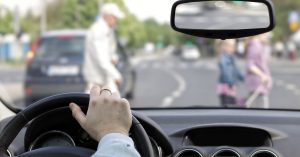
Massachusetts state officials are working to improve safety for older pedestrians.
When the snow falls, Massachusetts becomes more treacherous for everyone who walks. Older pedestrians are particularly vulnerable.
Massachusetts now has more than one million residents who are 65 or older – or roughly 15 percent of our population, according to a recent report, “Risk Factors for Older Pedestrian Injuries and Fatalities in MA.” The report was prepared for the Massachusetts Department of Transportation (MassDOT) in August 2019.
As Massachusetts residents live longer, many are more likely to be out walking for health or transportation. The state report identifies common risks to older pedestrians:
Winter Months. Researchers studied 4,472 pedestrian crashes across Massachusetts between 2006 and 2015, reporting crashes involving older pedestrians peak at 5 p.m. and during the month of December. November and January are also high risk months for older pedestrians, as they navigate darker conditions. When snow and ice is not cleared, sidewalks, parking lots and driveways can also contribute to unsafe conditions, as do drivers who fail to look for pedestrians and stop at crosswalks.
Causes of Older Pedestrian Crashes. Drivers who caused older pedestrian crashes were often inattentive, failed to yield the right of way or had trouble with visibility.
Where Older Pedestrians Were Hit. Older pedestrians were often hit at crosswalks at intersections, where they should have safety protections.
Where Older Pedestrians Crashes Occur. Researchers found Cambridge, Fall River, Lynn and New Bedford among the the top communities for highest number of older pedestrian crashes and the highest per capita.
Changing Face of Pedestrian Accidents. Crash rates involving “younger old” pedestrians – those between age 55 and 74 – increased. Crash rates among older pedestrians (75 and older) remained consistent.
Community Health. Communities with higher rates of disability reported greater rates of older pedestrian crashes. These included the urban neighborhoods of Boston, Lawrence and Chelsea.
Community Amenities. Communities with a high number of cultural amenities within walking distance – such as libraries and fitness centers – had higher crash rates among older pedestrians.
Not Just Older Pedestrians in Massachusetts. This state report comes as pedestrian fatalities rise across the country. Last March, the Governors Highway Safety Association announced a 35 percent increase in pedestrian deaths from 10 years ago (Streets Blog). This was the highest number of pedestrian fatalities since 1990.
Nationally, research shows 48 percent of pedestrian fatalities involved victims 50 and older, according to the Massachusetts study. Meanwhile, Massachusetts reports half of all pedestrian fatalities involve a pedestrian 55 and older.
Report Recommendations
The state report recommends work to protect older pedestrians be tied in with the Governor’s Council to Address Aging in Massachusetts, which was established in 2017. Among other advisories, the state report also sought infrastructure improvements in certain communities and creation of a winter public awareness campaign aimed at protecting older pedestrians.
Our Safety Tips for Pedestrians During Winter
Wear Neon. Pedestrians can make themselves more visible to traffic by wearing neon colors and neon reflective tape. Consider buying neon jackets, vests, hats and gloves to stand out.
Our Safety Tips for Drivers During Winter
Stop at Crosswalks. Make eye contact with pedestrians at crosswalks. Stop as they cross.
Other Drivers. Stop if you are approaching a driver who has stopped for a pedestrian at a crosswalk. Allow the pedestrian to completely cross the street.
Avoid Night Driving At Times. If you are overtired or are having trouble seeing at night, don’t drive. Make an appointment to have a doctor check your vision. Wear your eyeglasses as prescribed when you drive.
Limit Alcohol Consumption. Never drive while intoxicated. Use the designated driver system.
Free Legal Consultation – Boston Personal Injury Lawyers
With over 100 years combined experience, Breakstone, White & Gluck has been consistently recognized for our results in personal injury cases in Massachusetts, including by Top 100 New England Super Lawyers and U.S. News Best Law Firms. If you or a loved one has been injured by someone’s negligence, it is in your best interests to consult an experienced personal injury lawyer. For a free legal consultation, contact our attorneys at 800-379-1244 or 617-723-7676 or use our contact form.
New Federal Recommendations to Reduce Pedestrian Fatalities and Injuries
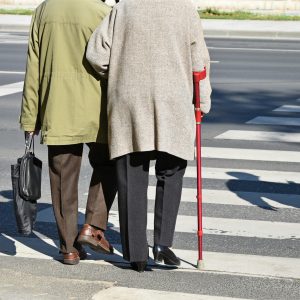 Pedestrians are facing a crisis on the roads, here in Boston and across the country. From 2009 to 2015, there was a 46 percent increase in pedestrian deaths across the U.S. (Source: National Highway Traffic Safety Administration).
Pedestrians are facing a crisis on the roads, here in Boston and across the country. From 2009 to 2015, there was a 46 percent increase in pedestrian deaths across the U.S. (Source: National Highway Traffic Safety Administration).
Now, the National Transportation Safety Board (NTSB) is stepping in with a comprehensive set of recommendations to improve safety, including: Read More


